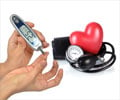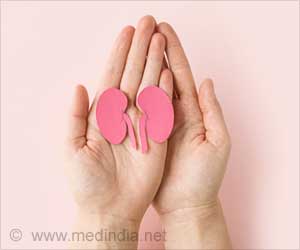Hypertensive children are highly likely to become hypertensive adults and to have measurable target organ injury, particularly blood vessels, and valves in the heart.

What to Know About High Blood Pressure in Children
Primary hypertension seen in an estimated 2-5% of children is a health problem that is often amplified by lifestyle and behaviors, many of which are modifiable. Since kids with high blood pressure levels tend to maintain high blood pressure into adulthood, diagnosing and appropriately addressing high blood pressure in youth is imperative to ensure improved lifetime health as early as possible.‘High blood pressure in children and adolescents need appropriate diagnosis, treatment, and modification of lifestyle risk factors.’





Blood pressure is recorded using two numbers: the systolic blood pressure (the top number in a blood pressure reading) indicates the pressure blood is exerting against the artery walls when the heart beats, and the diastolic blood pressure (the bottom number in a blood pressure reading) indicates the pressure blood is exerting against the artery walls while the heart is resting between beats.High blood pressure occurs when the force of blood flowing through the blood vessels is consistently too high. Damage from high blood pressure may lead to heart disease potentially leading to heart attack, stroke, kidney disease, peripheral artery disease, vision loss, angina (chest pain), and more.
Some factors that may contribute to high blood pressure in children are not modifiable, such as genetics, low birth weight, and even environmental exposures. One large study in China evaluated children ages 7 through 18 and found an association between air pollution from industrial and vehicle emissions and other pollutants and an increased risk of abnormal blood pressure.
Some significant risk factors for the high blood pressure may be modified to improve blood pressure levels, including obesity, physical activity, and a key factor—nutrition. A recent meta-analysis of 18 studies with high-quality data on sodium intake and blood pressure found that systolic blood pressure readings increased by 0.8 mm Hg and diastolic blood pressure levels increased by 0.7 mm Hg for every additional one gram of daily sodium intake.
Preventing Primary Hypertension in Children
A healthy lifestyle in childhood may be extremely helpful in mitigating the risk of developing hypertension in youth. Preventive measures for families that promote healthy lifestyles in children are important, such as eating healthy food, encouraging physical activity that leads to improved physical fitness and healthy sleep, and avoiding the development of obesity.Regular blood pressure monitoring by a health care clinician is also essential so that if high blood pressure is present, it can be quickly detected and addressed. Recognizing high blood pressure in children and adolescents who are otherwise healthy and without symptoms may be challenging.
Advertisement
Public health efforts to study and improve high blood pressure in children may be difficult for numerous reasons, yet it may be useful to gather information from pediatric databases to calculate and monitor trends in blood pressure in children relative to population-based variations in obesity, physical activity, nutrition, unmet social needs, and adverse childhood experiences.
Future studies to improve both the recognition and diagnosis of high blood pressure in this age group, as well as clinical trials to evaluate the medical treatment and recommend public health initiatives, are all vital to improving the increase we are seeing in hypertension in children.
Source-Eurekalert















